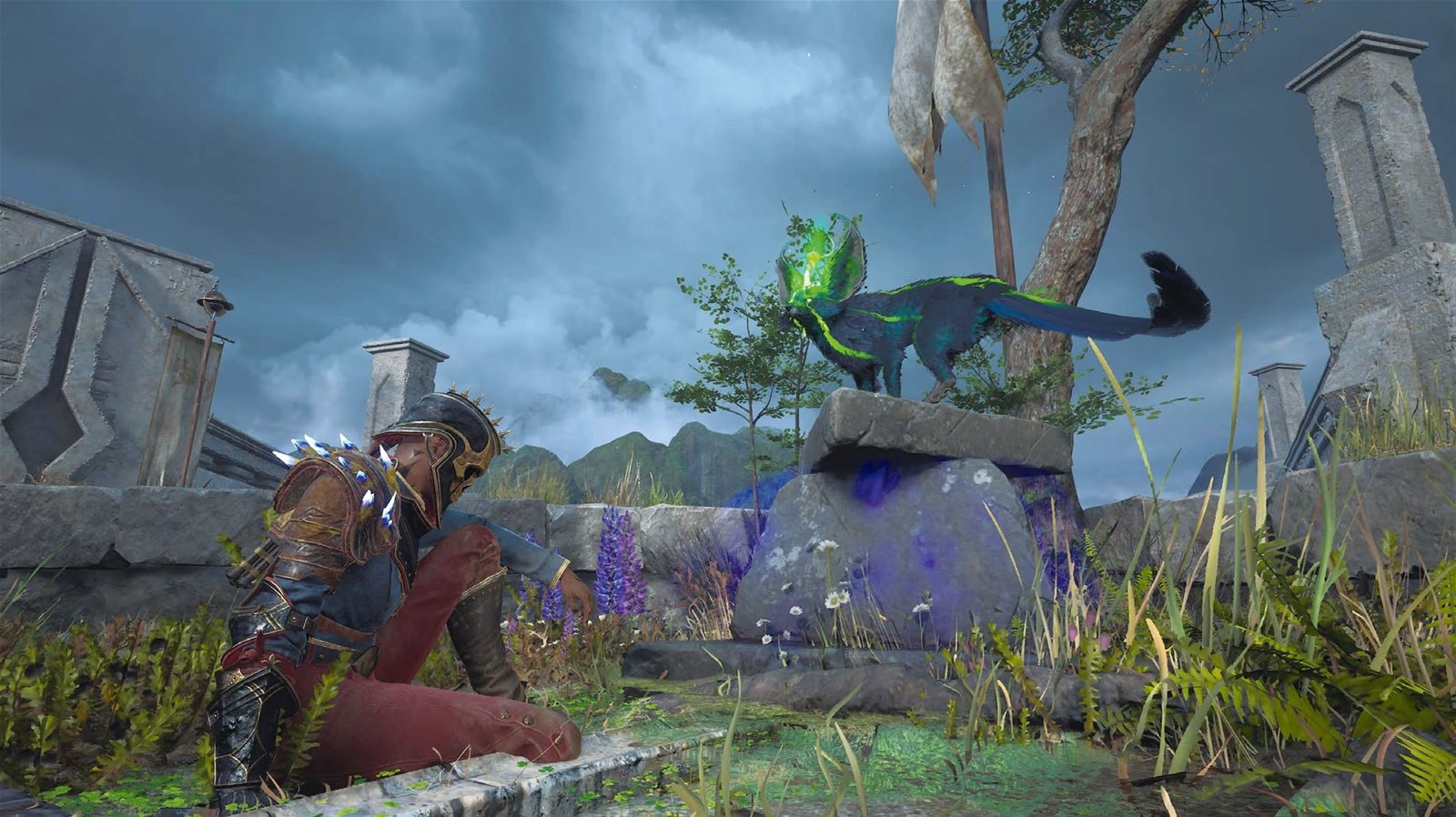
Two bonfire equivalents exist: lodestones (pictured here) and campfires, around which your growing squad gathers
When Flintlock made its appearance in June’s Xbox Games Showcase, we were, of course, already well acquainted, the game having graced E370’s cover back in 2022. But one word, spelled out in bungalow-sized capitals on the auditorium screen in LA, caught our eye precisely because it hadn’t come up in that conversation two years earlier: “SOULS-LITE”. Of course, this is a marketing line – as with any genre label, ultimately. But given we’ve seen the term repeated in practically every piece of writing about the game since, if nothing else it’s effective. What exactly does it mean?
If we trace it back to the obvious etymological roots, it suggests a game that is to Dark Souls as the ‘Roguelite’ is to 1980’s ASCII dungeon crawler. The latter term encompasses everything from Hades to FTL, Balatro to Invisible, Inc. Games in entirely separate genres, none of them playing anything like Rogue, but borrowing the core framework of permadeath paired with procedural generation, so that you’re crawling a different dungeon every time – even if that dungeon happens to be increasingly high-stakes rounds of video poker.
Of course, this isn’t the case with Flintlock. While not hewing as close to FromSoftware’s work as developer A44’s previous release, Ashen, it’s still patterned after those games. A dark-fantasy action RPG, with combat that mixes the circling, blocking and rolling of Souls with the flashing power attacks and stamina-eroding counters that have been a genre fixture since Sekiro, delivered via sidearm à la Bloodborne. Instead, ‘lite’ is here being used in much the same way it might be appended to a brand of beer or fizzy drink. Less of the stuff that’s bad for you, but also probably a little less of the flavour. Just applied to sadomasochism instead of calories. Flintlock isn’t particularly interested in you beating your head against a virtual wall, to the extent that it offers – after so many years of tiresome discourse on the topic – a Story difficulty setting. A wise choice, since when A44 does ratchet up the intensity, in its second boss fight, it demonstrates a lack of understanding of what makes for a compelling challenge. (Hint: it is not three minutes of chipping away a health bar with minimal resistance before being one-shotted by a second-phase attack that doesn’t really ‘get’ i-frames.) It’s also much shorter than the average action RPG, with a player character essentially multiclassing across melee, ranged and magic, allowing it to be carried along with relatively minimal upgrade systems. The only resources here are Reputation and three crafting materials, and we don’t miss our creaking inventory menus for a moment.
OK, it pulls in the odd concept from games outside the tightknit Soulslike family. Hamlets are essentially Far Cry Outposts, while the secondary rifle comes complete with Gears-style active reload and Sniper Elite slow-motion killcam. But these are delicate pivots away from tradition, certainly paddling out no farther than Respawn’s Jedi games have already – should we file those under ‘Soulslite’ too?